The automotive landscape continues to evolve with compact SUVs gaining popularity among urban drivers and families. Among the contenders in this segment, the Mazda CX-30 and Volkswagen Taigo stand out for their unique offerings. This article presents a detailed comparison of the two vehicles highlighting their technical specifications, innovative features, and driving experiences.
Mazda CX-30 vs VW Taigo – Which one offers the better deal?
Compare performance, boot capacity, efficiency and price at a glance.
Find out which car is the better choice for you – Mazda CX-30 or VW Taigo?
Engine and Performance
The Mazda CX-30 enters the arena with two engine options: a 2.0-liter petrol engine producing 186 hp and a 2.5-liter alternative delivering 140 hp. These engines, paired with either a manual or an automatic gearbox, provide versatility in driving preferences. The CX-30 can achieve a top speed of 204 km/h and accelerates from 0 to 100 km/h in as little as 8.3 seconds, demonstrating its sporty edge.
In contrast, the VW Taigo offers a range of powertrains including a 1.0-liter engine with outputs of 95 hp, 115 hp, and a 1.5-liter option offering 150 hp. The Taigo's optimal engine configuration can reach a top speed of 212 km/h with a commendable acceleration time of 8.2 seconds. The Taigo's focus appears to lie in delivering a balanced performance suited for city driving.
Fuel Efficiency and Consumption
When it comes to fuel efficiency, the CX-30 holds its ground with consumption figures ranging between 5.7 to 6.6 L/100 km depending on the engine configuration. This places it in a competitive position among compact SUVs.
The VW Taigo, however, edges this competition slightly, with consumption figures as low as 5.4 L/100 km, making it an excellent option for those conscious of fuel costs. With a smaller 40-liter fuel tank, the Taigo still manages to provide adequate range for everyday use despite its less robust capacity compared to the CX-30's 51-liter tank.
Dimensions and Practicality
In terms of size, the Mazda CX-30 measures 4395 mm in length, 1795 mm in width, and 1540 mm in height, while the VW Taigo is slightly smaller at 4266 mm in length, 1757 mm in width, and 1518 mm in height. The CX-30’s larger dimensions translate into a roomy interior and a trunk capacity of 430 liters, which can accommodate more luggage or gear.
On the other hand, the VW Taigo offers a marginally larger trunk space at 440 liters, despite its smaller exterior footprint. This clever packaging maximizes cargo potential, making it an attractive choice for daily errands and weekend adventures alike.
Interior Features and Technology
Inside, both vehicles offer a modern and user-friendly cabin featuring high-quality materials. The CX-30 shines with its emphasis on driver-focused design and advanced technology like the Mazda Connect infotainment system, which integrates seamlessly with smartphones and comes with a responsive touchscreen.
The Volkswagen Taigo, leans heavily on its tech-savvy approach with a digital cockpit displaying essential data at a glance. The infotainment system is quick and intuitive, though some may find the touch buttons less tactile compared to traditional knobs.
Safety Innovations
Safety is paramount in both SUVs. The Mazda CX-30 comes equipped with a suite of Driver Assistance Technologies including adaptive cruise control, lane-keeping assist, and automated emergency braking, earning high safety ratings from testing agencies.
Similarly, the VW Taigo features an impressive array of safety technologies, including front assist with emergency braking and blind-spot monitoring. Both vehicles promise peace of mind regardless of the driving conditions.
Conclusion: A Choice of Character
Choosing between the Mazda CX-30 and Volkswagen Taigo ultimately hinges on individual preferences. The CX-30 offers a more dynamic driving experience with a sportier performance angle and a slightly larger, practical cabin, making it suitable for those needing versatility.
The Taigo, meanwhile, caters to urbanites seeking exceptional fuel economy and a compact, stylish profile without sacrificing practicality. Both vehicles are well-equipped, ensuring that whichever you choose, you will not be disappointed.
Here’s where it gets real: The technical differences in detail
Costs and Efficiency:
Price and efficiency are key factors when choosing a car – and this is often where the real differences emerge.
VW Taigo has a noticeable advantage in terms of price – it starts at 19600 £, while the Mazda CX-30 costs 25200 £. That’s a price difference of around 5610 £.
Fuel consumption also shows a difference: VW Taigo manages with 5.30 L and is therefore minimal more efficient than the Mazda CX-30 with 5.70 L. The difference is about 0.40 L per 100 km.
Engine and Performance:
Under the bonnet, it becomes clear which model is tuned for sportiness and which one takes the lead when you hit the accelerator.
When it comes to engine power, the Mazda CX-30 has a somewhat edge – offering 186 HP compared to 150 HP. That’s roughly 36 HP more horsepower.
In acceleration from 0 to 100 km/h, the VW Taigo is hardly perceptible quicker – completing the sprint in 8.20 s, while the Mazda CX-30 takes 8.30 s. That’s about 0.10 s faster.
In terms of top speed, the VW Taigo performs slight better – reaching 212 km/h, while the Mazda CX-30 tops out at 204 km/h. The difference is around 8 km/h.
There’s also a difference in torque: VW Taigo pulls barely noticeable stronger with 250 Nm compared to 240 Nm. That’s about 10 Nm difference.
Space and Everyday Use:
Beyond pure performance, interior space and usability matter most in daily life. This is where you see which car is more practical and versatile.
Both vehicles offer seating for 5 people.
In curb weight, VW Taigo is a bit lighter – 1229 kg compared to 1455 kg. The difference is around 226 kg.
In terms of boot space, the VW Taigo offers minimal more room – 440 L compared to 430 L. That’s a difference of about 10 L.
In maximum load capacity, the Mazda CX-30 performs somewhat better – up to 1406 L, which is about 184 L more than the VW Taigo.
When it comes to payload, Mazda CX-30 barely noticeable takes the win – 496 kg compared to 457 kg. That’s a difference of about 39 kg.
Who wins the race?
The Mazda CX-30 proves to be leads convincingly overall and therefore becomes our DriveDuel Champion!
Mazda CX-30 is the better all-rounder in this comparison.
 @ Mazda Motor Corporation
@ Mazda Motor Corporation
Mazda CX-30
Mazda CX-30
The Mazda CX-30 blends sleek coupe-like lines with the practicality of a compact crossover, feeling more premium than its price tag suggests. It’s a joy to drive for anyone who likes a taut chassis and an interior that treats daily commutes like a small luxury escape.
details @ Mazda Motor Corporation
@ Mazda Motor Corporation
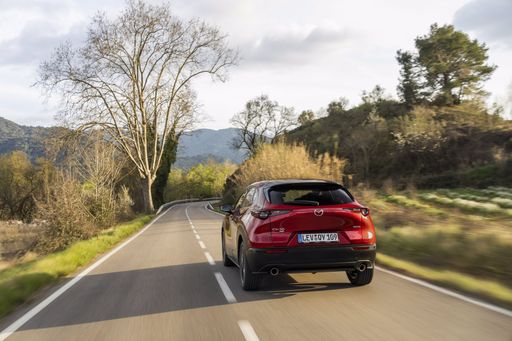 @ Mazda Motor Corporation
@ Mazda Motor Corporation
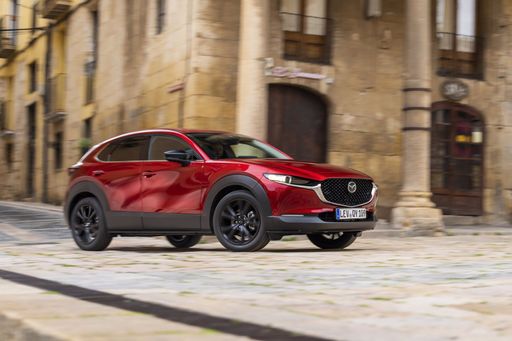 @ Mazda Motor Corporation
@ Mazda Motor Corporation
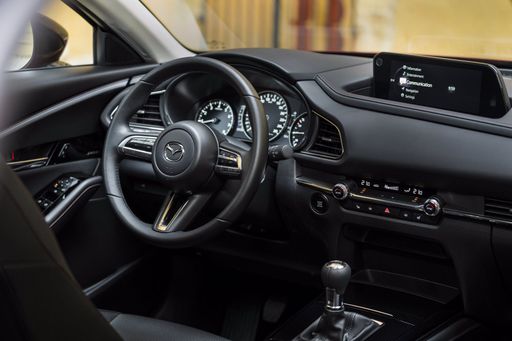 @ Mazda Motor Corporation
@ Mazda Motor Corporation
VW Taigo
The VW Taigo brings coupe-like flair to the compact crossover scene with sharp styling and an interior that punches above its price, feeling smarter than you’d expect. It’s an easygoing daily companion that balances comfort and practicality with a playful wink, perfect for city drivers who want something livelier than a regular hatchback.
details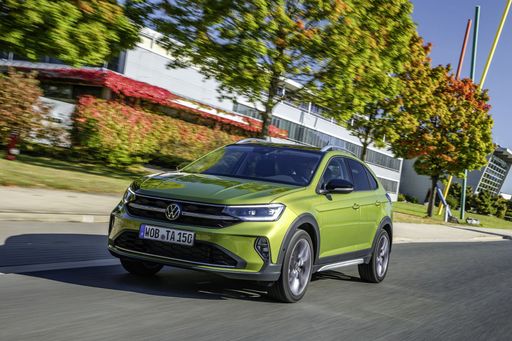 @ Volkswagen AG / VW Media
@ Volkswagen AG / VW Media
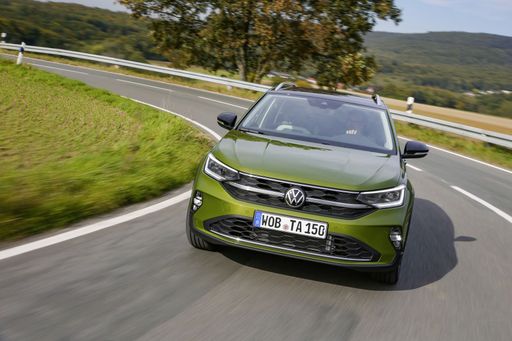 @ Volkswagen AG / VW Media
@ Volkswagen AG / VW Media
 @ Volkswagen AG / VW Media
@ Volkswagen AG / VW Media
 @ Volkswagen AG / VW Media
@ Volkswagen AG / VW Media
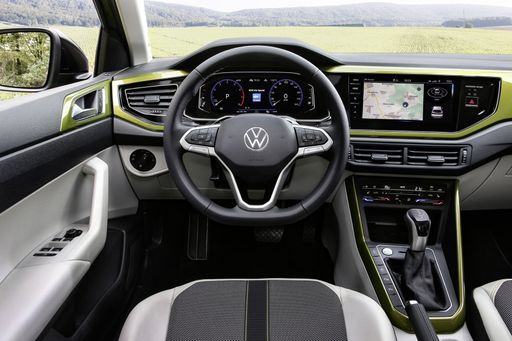 @ Volkswagen AG / VW Media
@ Volkswagen AG / VW Media
 @ Mazda Motor Corporation
@ Mazda Motor Corporation
|
 @ Volkswagen AG / VW Media
@ Volkswagen AG / VW Media
|
|
|
|
Costs and Consumption |
|
|---|---|
|
Price
25200 - 36800 £
|
Price
19600 - 31300 £
|
|
Consumption L/100km
5.7 - 6.6 L
|
Consumption L/100km
5.3 - 5.8 L
|
|
Consumption kWh/100km
-
|
Consumption kWh/100km
-
|
|
Electric Range
-
|
Electric Range
-
|
|
Battery Capacity
-
|
Battery Capacity
-
|
|
co2
129 - 148 g/km
|
co2
120 - 132 g/km
|
|
Fuel tank capacity
48 - 51 L
|
Fuel tank capacity
40 L
|
Dimensions and Body |
|
|---|---|
|
Body Type
SUV
|
Body Type
SUV
|
|
Seats
5
|
Seats
5
|
|
Doors
5
|
Doors
5
|
|
Curb weight
1455 - 1587 kg
|
Curb weight
1229 - 1302 kg
|
|
Trunk capacity
422 - 430 L
|
Trunk capacity
440 L
|
|
Length
4395 mm
|
Length
4266 mm
|
|
Width
1795 mm
|
Width
1757 mm
|
|
Height
1540 mm
|
Height
1518 mm
|
|
Max trunk capacity
1398 - 1406 L
|
Max trunk capacity
1222 L
|
|
Payload
458 - 496 kg
|
Payload
448 - 457 kg
|
Engine and Performance |
|
|---|---|
|
Engine Type
Petrol MHEV
|
Engine Type
Petrol
|
|
Transmission
Manuel, Automatic
|
Transmission
Manuel, Automatic
|
|
Transmission Detail
Manual Gearbox, Automatic Gearbox
|
Transmission Detail
Manual Gearbox, Dual-Clutch Automatic
|
|
Drive Type
Front-Wheel Drive, All-Wheel Drive
|
Drive Type
Front-Wheel Drive
|
|
Power HP
140 - 186 HP
|
Power HP
95 - 150 HP
|
|
Acceleration 0-100km/h
8.3 - 10.3 s
|
Acceleration 0-100km/h
8.2 - 11.1 s
|
|
Max Speed
191 - 204 km/h
|
Max Speed
184 - 212 km/h
|
|
Torque
238 - 240 Nm
|
Torque
175 - 250 Nm
|
|
Number of Cylinders
4
|
Number of Cylinders
3 - 4
|
|
Power kW
103 - 137 kW
|
Power kW
70 - 110 kW
|
|
Engine capacity
1998 - 2488 cm3
|
Engine capacity
999 - 1498 cm3
|
General |
|
|---|---|
|
Model Year
2025
|
Model Year
2024 - 2025
|
|
CO2 Efficiency Class
D, E
|
CO2 Efficiency Class
D
|
|
Brand
Mazda
|
Brand
VW
|
What drive types are available for the Mazda CX-30?
The Mazda CX-30 is offered with Front-Wheel Drive or All-Wheel Drive.
The prices and data displayed are estimates based on German list prices and may vary by country. This information is not legally binding.
